TWW 11.2: Fury Warrior DPS guide – Stats, builds, talents, rotations, and more
Fury Warrior guide for The War Within Season 3. Explore the best stats, builds, talents, rotations, macros, and tips to maximize your damage in Patch 11.2.
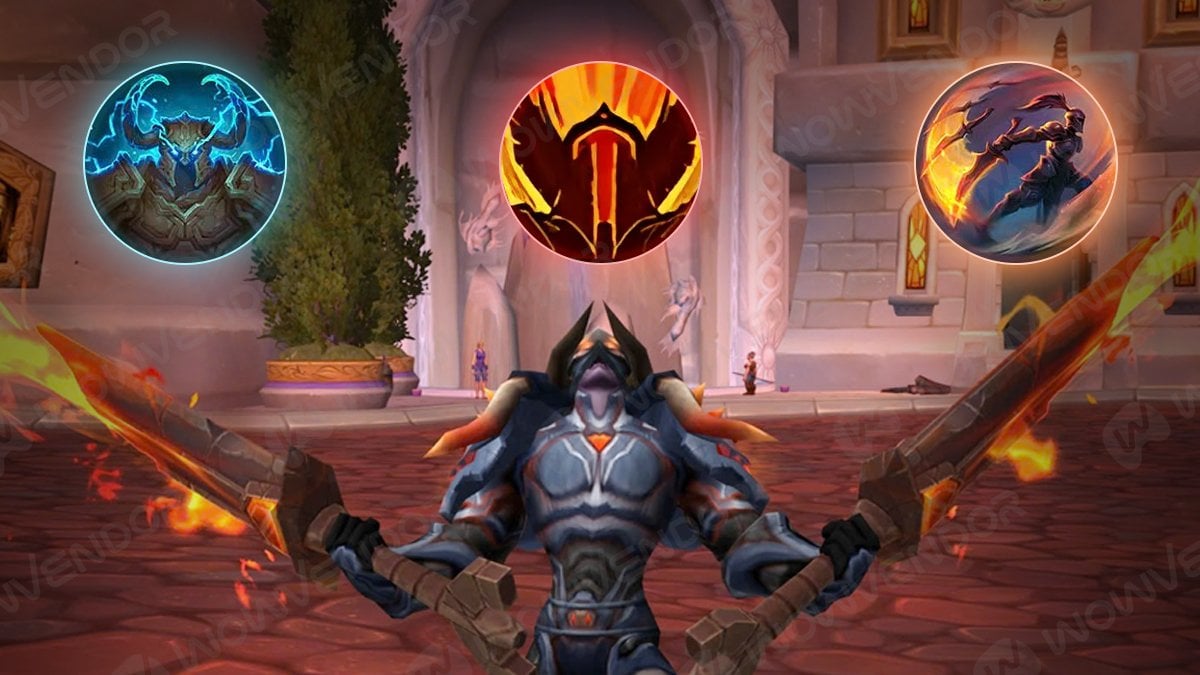
Table of Contents
Key takeaways
- Fury Warrior strengths and weaknesses: Fury Warrior is a fast-paced melee DPS with high survivability, strong AoE burst, and mobility. However, it lacks complexity, suffers from movement-heavy fights, and has limited group utility.
- Patch 11.2 changes: The update introduces some buffs and new raid gear sets. For a detailed breakdown, check the dedicated section.
- Stat priorities and gear: Strength remains the primary stat, followed by secondary stats: Mastery = Haste > Versatility > Critical Strike.
- Best races for Fury Warrior: Humans, Night Elves, Orcs, and Trolls offer slight gameplay advantages, such as extra damage cooldowns, stun resistance, or dodge bonuses.
- Talent builds and rotations: Slayer excels in single-target and raid damage, while Mountain Thane provides better survivability and AoE for Mythic+. The priority-based rotation focuses on maintaining Enrage uptime using Rampage and maximizing burst cooldowns.
Fury Warriors focus on sustained damage with a fast-paced playstyle. The goal is to generate enough Rage for Rampage and maintain Enrage, using a variety of abilities. This spec offers straightforward rotation. It’s ideal for players who prefer constant action, with abilities that generate resources and minimal downtime.
In this The War Within Patch 11.2 Fury Warrior DPS guide, you’ll find everything you need to know about this spec in the latest patch. We’ll cover changes introduced in Patch 11.2, along with key details like pros and cons, stat priority, talent builds, rotation, gameplay tips, macros, Weak Aura settings, utility, and much more.
Fury Warrior strengths and weaknesses
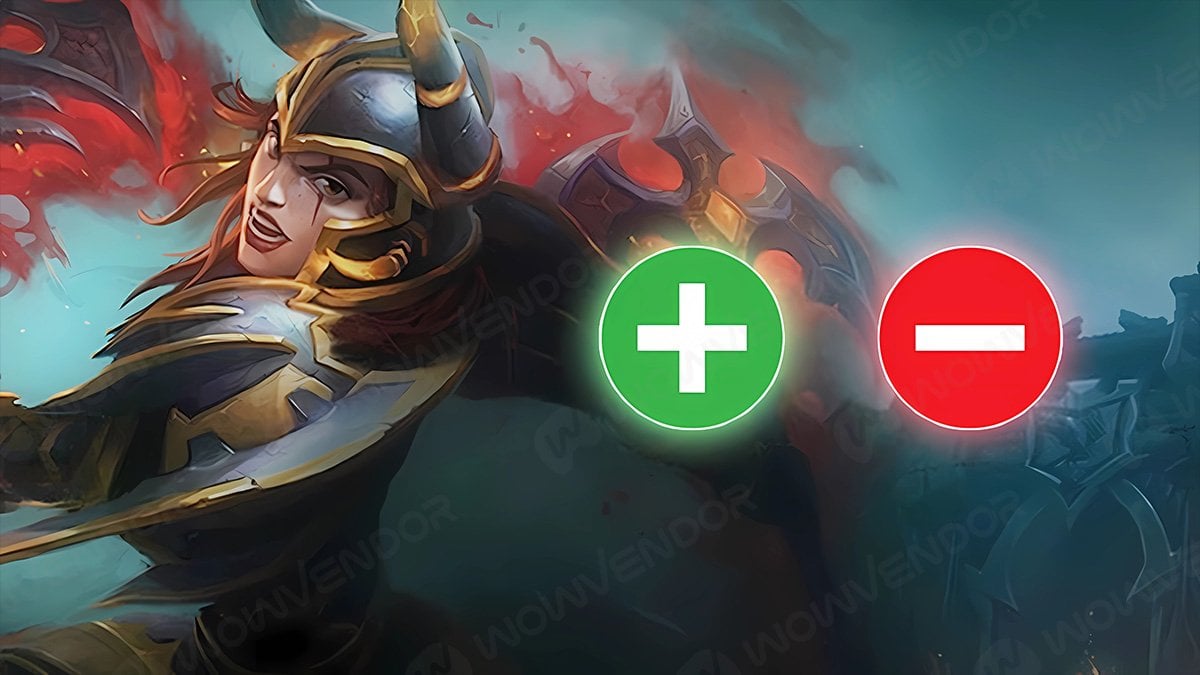
Before we start, let’s look at the pros and cons of Fury Warrior:
| Fury Warrior strengths | Fury Warrior weaknesses |
|---|---|
| A fast-paced melee DPS with an intuitive and engaging rotation of skills. This allows players to quickly pick up the spec and master it as they go. | While you can adjust the pace, the core gameplay loop stays the same. No WoW Fury Warrior build drastically changes how the spec plays. For advanced players or those craving more complexity, the rotation might feel repetitive. |
| With Plate armor and built-in Fury Warrior defensives, this spec provides higher survivability than many other DPS. Bloodthirst and Enraged Regeneration also offer solid self-healing. | Requires constant uptime of a spec-specific effect, Enrage, to dish out competitive damage numbers. This makes the spec suffer in fights with a lot of movement and downtime. This is a pure melee spec, so you should be in the melee range to deal damage. |
| Powerful AoE burst and high sustain damage. AoE rotation is not much different from a single-target one. | AoE burst comes at the expense of single-target damage, making the spec average. |
| Has mobility options in the form of skills such as Intervene, Heroic Leap, and Charge. | Burst cooldowns are the main source of damage. The damage outside the burst window may be on the lower side compared to other DPS specs. |
| Although it lacks utility, the Battle Shout and Rallying Cry are still powerful buttons that provide unique bonuses to the group. | Weird talent placements. Some key talents are locked behind less useful ones, forcing you to take suboptimal choices to reach essential picks for your build. |
| Lack of group utility compared to other melee DPS specs. |
Fury Warrior is easy to pick up and optimize for high damage. It might feel too simple for players seeking a more complex melee spec. However, it’s an excellent entry point for melee DPS and a great choice for those who prefer less thinking and more action.
Fury Warrior changes in The War Within Patch 11.2
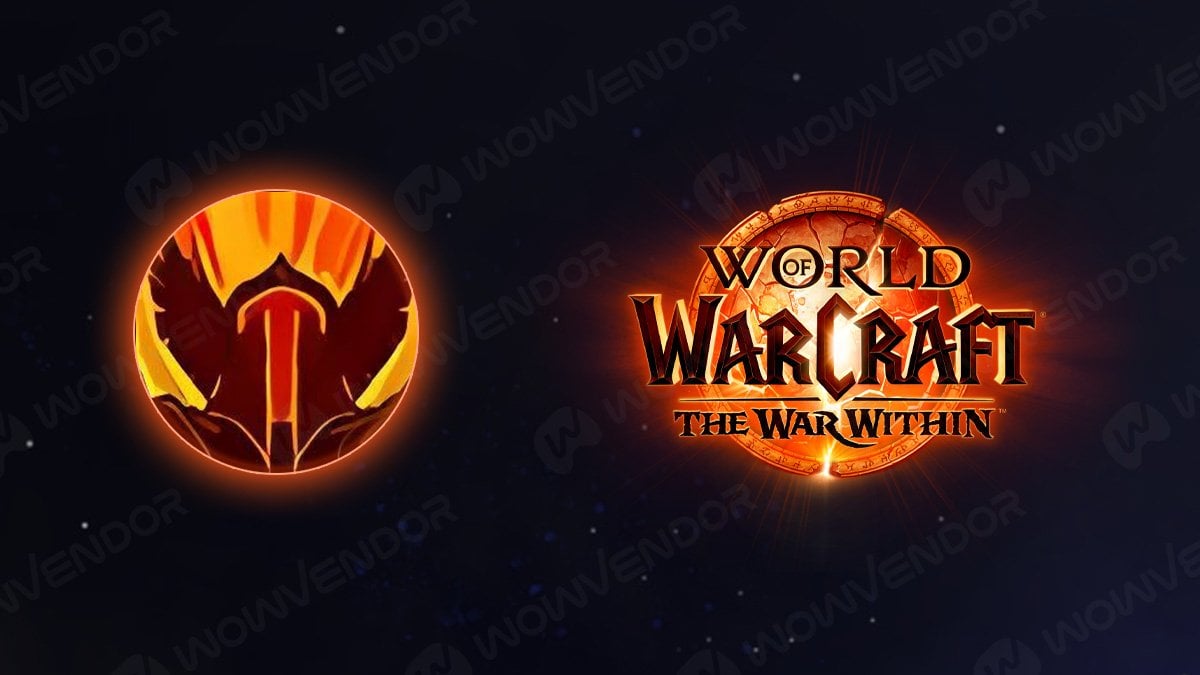
Going into Season 3, Fury Warrior received some buffs. Nothing game-changing, but more buffs are always good to get.
- Hamstring cooldown reduced to 0.75 seconds.
- Berserker Rage no longer removes Scatter Shot. The tooltip was changed to indicate that the ability works only for some incapacitating effects.
- All ability damage increased by 5%.
- Bladestorm damage increased by 15%.
- Whirlwind damage increased by 10%.
- Improved Whirlwind causes your single-target attacks to deal 65% damage to up to 4 nearby targets (was 55%).
Most significant changes come from new tier sets available in the Season 3. This time, they provide unique effects for your current Hero spec.
2 pieces of the Slayer set increase Execute damage by 10%. Execute with Sudden Death has a 10% chance per Overwhelm stack to trigger Slayer’s Strike. With 4 pieces, Raging Blow‘s damage is increased by 10%. Raging Blow also gets a 2% chance per Overwhelm stack to trigger Reap the Storm.
Mountain Thane gets a new interaction for Thunder Blast. With 2 pieces, each use of Thunder Blast has a 35% chance to summon 5 Ionized Strikes on the target, dealing AoE Nature damage. With 4 pieces, every time Ionized Strike is triggered you get a Severe Thunder buff. This refunds a Thunder Blast charge and makes it deal 100% extra damage.
As you can see, new sets define roles for both Hero specs. Slayer is even stronger for single-target, while Mountain Thane excels at AoE.
Best race for Fury Warrior
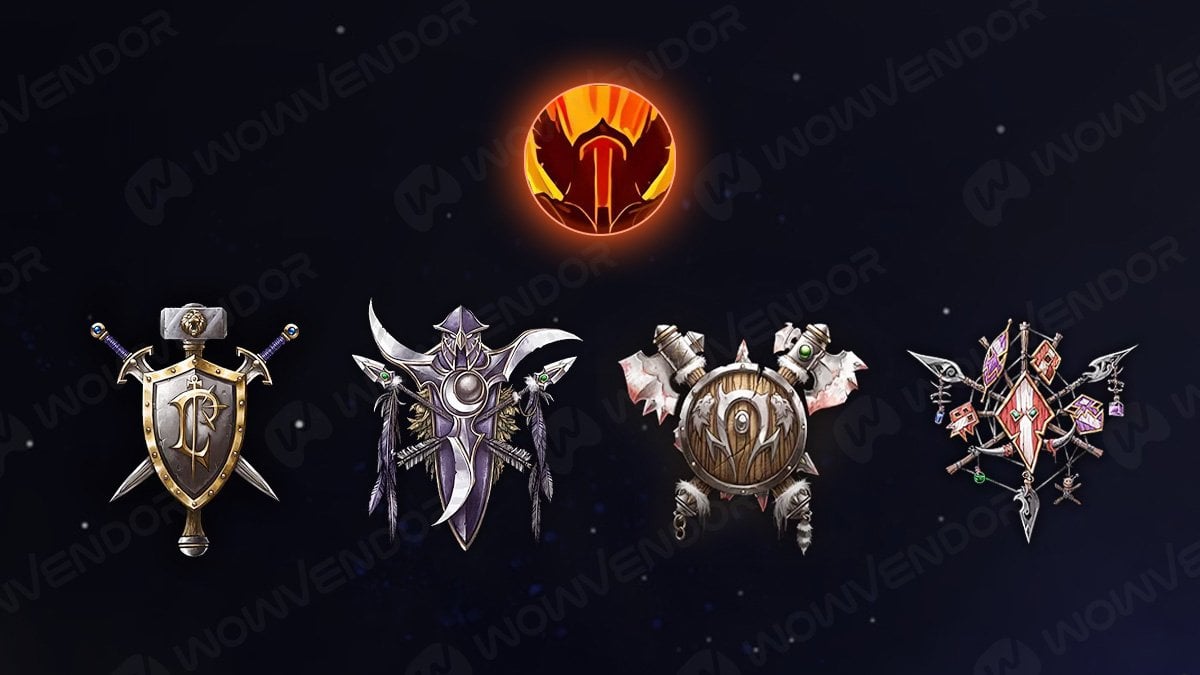
At the current state of retail WoW, races are mostly irrelevant for PvE. There is some consideration of racial skills for PvP. But for the most part, people pick the race they prefer aesthetically, rather than base their decision on some gameplay factors.
If you have no preference and want to minmax the stats, then the four best Fury Warrior race choices are Human, Night Elf, Orc, and Troll.
Alliance

The best races for an Alliance Fury Warrior are Human and Night Elf.
- Human. A classic, or some may say, a cliche choice for a Warrior. From a gameplay perspective, Humans are resourceful and have corresponding racial talents. You can have an extra charge of Hearthstone on a lower cooldown. Have an extra cleanse for Stun effects. And of course, Humans get 2% more secondary stats from all the sources. All of this is useful for a Warrior.
- Night Elf. Second in popularity among Alliance options. Their racial abilities are specific, but some of them are of use to Warriors. Quickness increases your dodge chance and movement speed. Shadowmeld allows you to hide to take a breather by temporarily losing aggro as long as you stay hidden. And during the night, Touch of Elune provides an extra 1% Haste, an important secondary stat for Warriors. During the day, it grants a bonus 1% Critical Strike.
Horde

The best races for a Horde Fury Warrior are Orc and Troll:
- Orc. Orc Warriors to the Horde are what Human Warriors are to the Alliance. From the gameplay side, two Orc racial abilities are useful for Warriors. Hardiness reduces the duration of stuns. And Blood Fury is an extra damage-increasing cooldown, very useful for your burst.
- Troll. Another popular choice is due to their racial abilities. Da Voodoo Shuffle and Regeneration are nice passive effects that are useful for everyone, Warriors included. Berserking, on the other hand, is a very valuable cooldown. It works like a mini Bloodlust / Heroism, as it gives a burst of Haste, an important stat for a Fury Warrior.
Fury Warrior stats priority
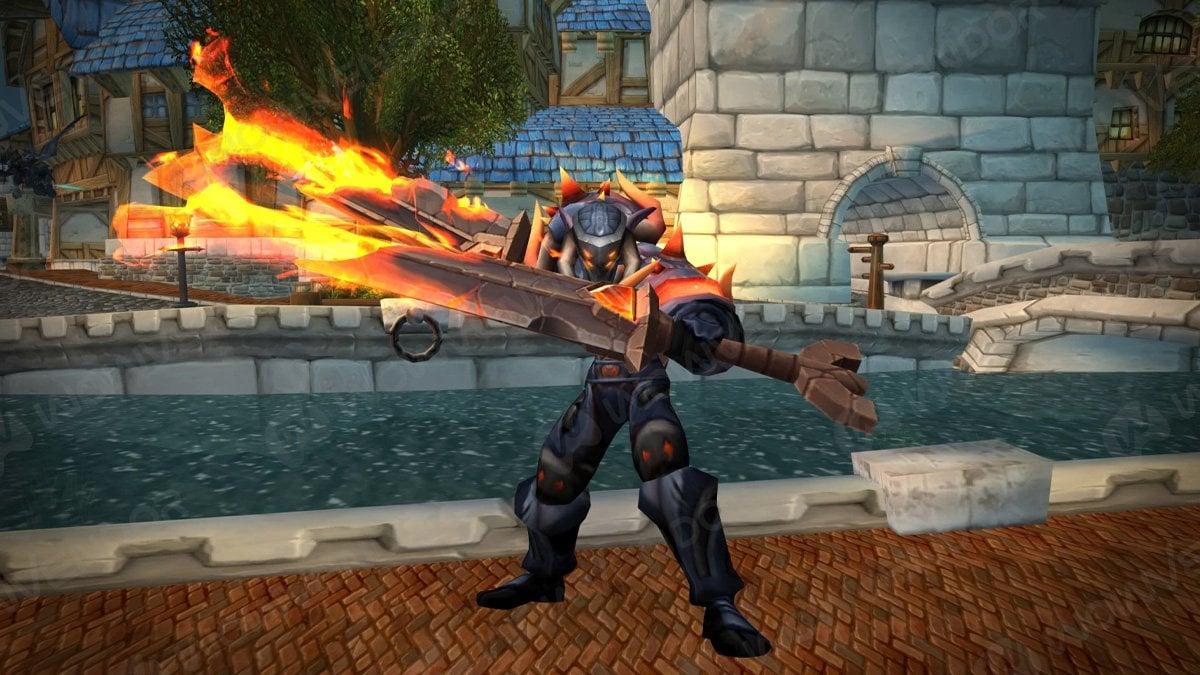
- Primary stat: Strength
- Secondary stats: Mastery = Haste > Versatility >Critical Strike .
Note
For Fury Warriors, item level is the top priority. Higher iLvl gear provides more Strength, which directly increases Attack Power, boosting your overall damage output.
Mastery increases the effect of Fury Warrior’s primary spec mechanic, Mastery: Unshackled Fury. The effect is simple: as long as you are Enraged, you deal more damage. And since the whole point of Fury Warrior is to maintain Enrage, Mastery grants you a semi-permanent damage buff.
Haste is another important stat. It reduces the delay between auto-attacks and cooldowns, so you can use most of your skills more often. Using more skills means more Rage and high Enrage uptime, which translates directly into high damage. With enough Haste, the rotation feels more fluid, as there is little downtime between skill uses.
Versatility increases both damage dealt and damage reduction. While Mastery and Haste offer bigger damage boosts, Versatility remains valuable as it also affects the damage from trinkets and consumables.
Critical Strike not only boosts the chance of landing critical hits but also increases their damage. However, Fury Warriors don’t gain extra Rage from crits, so this stat is less valuable overall.
Maxing out Haste and Mastery should be your main focus, especially if you’ve got top-tier gear. But don’t forget about diminishing returns. The more you stack secondary stats, the less of an effect they have.
So, when you reach high enough priority stats, getting Critical Strike and Versatility may result in a bigger damage increase. You should aim for 20–25% Haste and about 50+% Mastery.
If you have many different pieces of gear and are not sure which to wear, you can try to sim your gear. If you want some top gear recommendations, be sure to check out our Fury Warrior Patch 11.2 BiS guide.
Fury Warrior talents builds
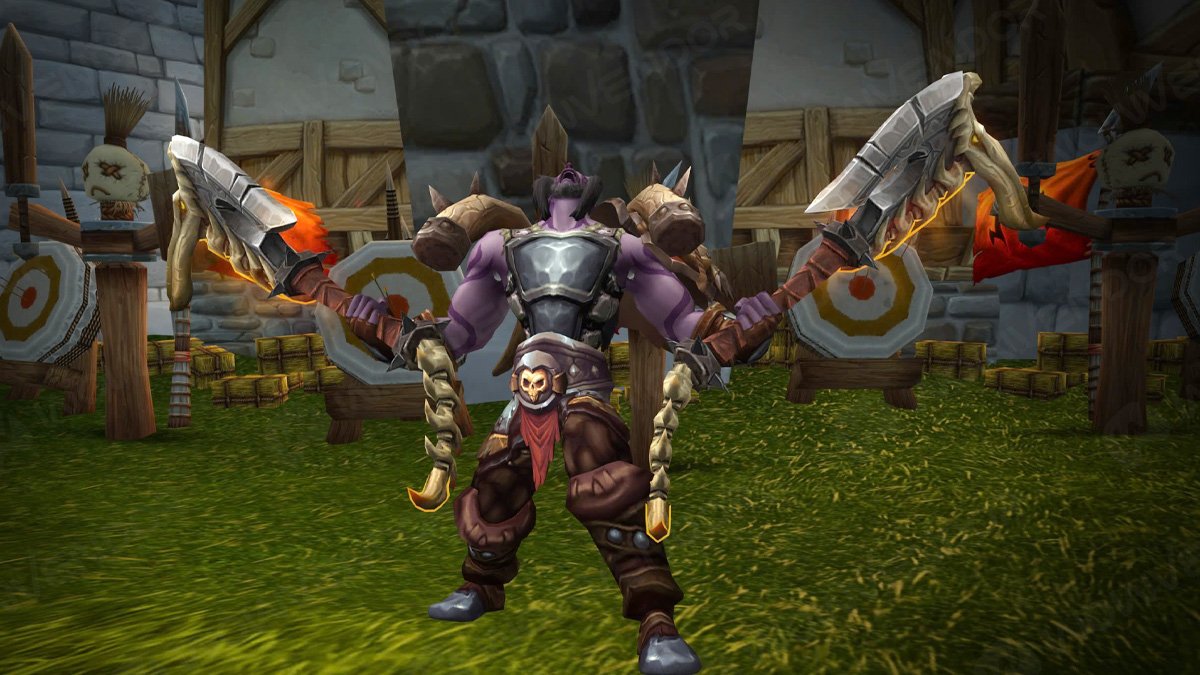
As we mentioned, there is not much variety in Fury Warrior talents builds. Still, there are two primary build options, one for each Hero Talents tree. When it comes to DPS specs, Hero Talents usually provide two distinct damage profiles.
In the case of Fury Warrior:
- Slayer is all about better single-target damage.
- Mountain Thane sacrifices some of that for better multitarget sustained damage.
Slayer Fury Warrior
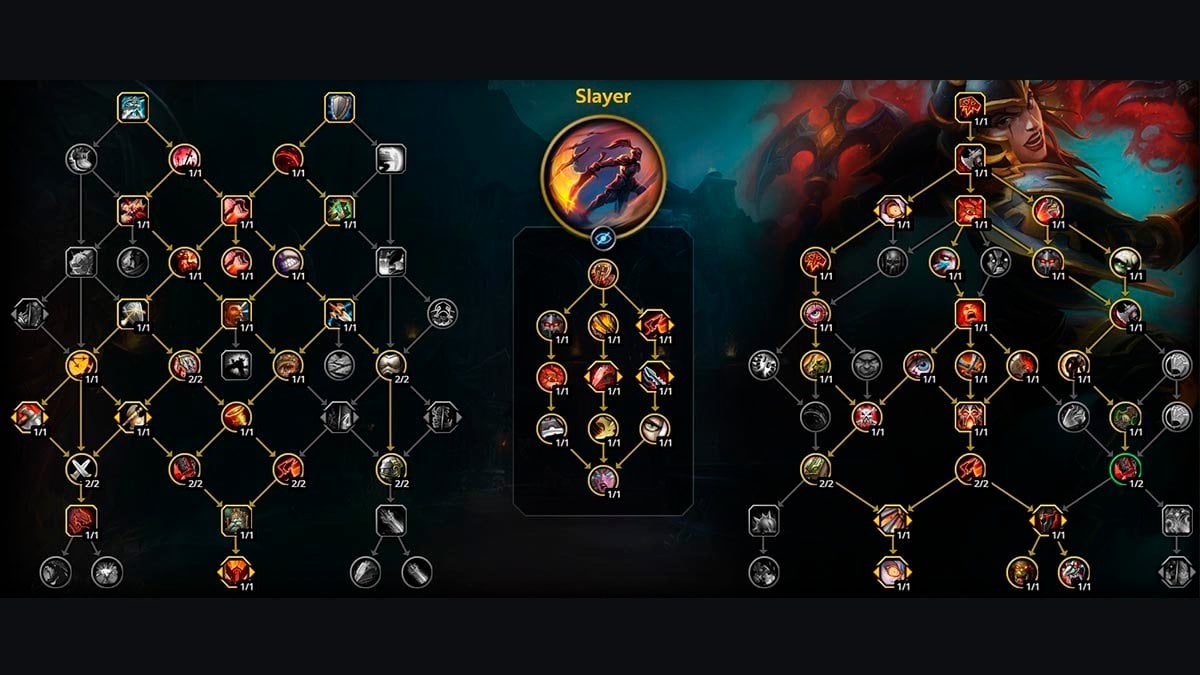
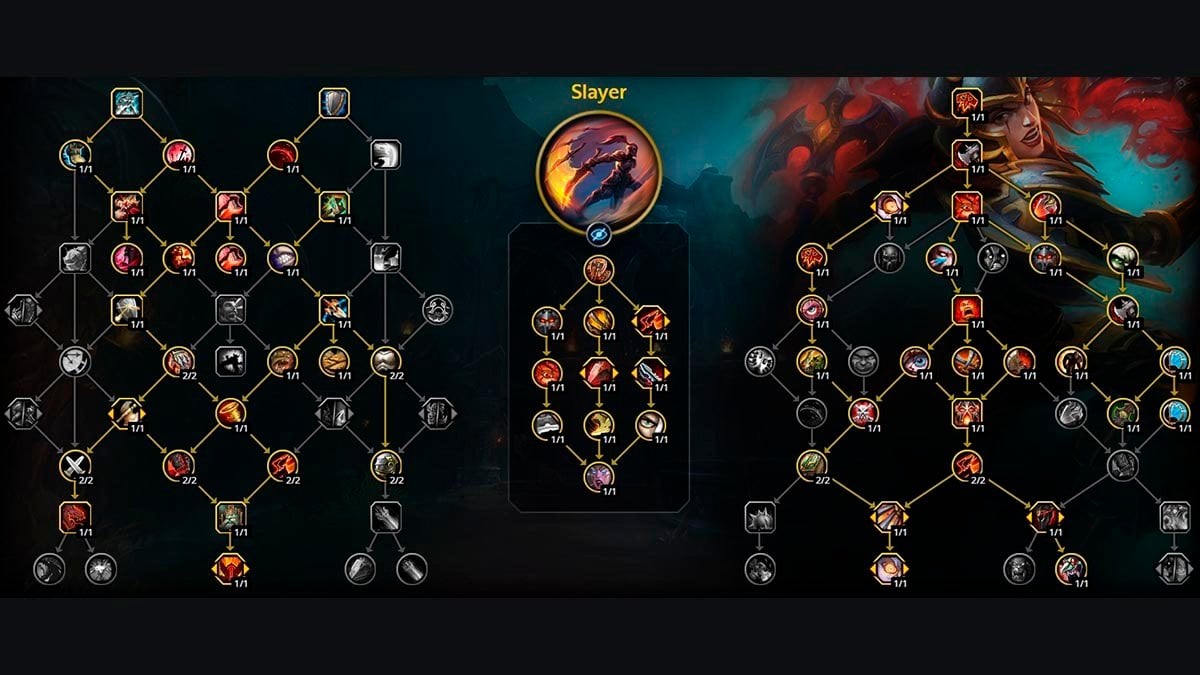
This talent tree focuses on having bursts that are equally as good in AoE and single-target. This build focuses on single damage more, but many attacks have a cleave effect, providing just as good results in multitarget. A perfect Fury Warrior build WoW for a raid scenario, where you need that single target damage and burst.
Below are the import codes for raid and M+ builds for Slayer Fury Warrior for your convenience.
Import code for Slayer Fury Warrior raid/single-target build:
CgEAAAAAAAAAAAAAAAAAAAAAAAAAAAAAAAQjhxsxMWmxgZWYmZGzwMMz22YMzMLYGzMzYmZWGGeAzMAAAIGbbDsAmgZYCMDbAImport code for Slayer Fury Warrior Mythic+ build:
CgEAAAAAAAAAAAAAAAAAAAAAAAAAAAAAAAQjBzsZmhZMYmFmZmZmhZYmttZGzMzCmxMzMmZsMMYmZAAAQM22GYBMBzwEYwGAMountain Thane Fury Warrior

This talent tree focuses on better survivability while giving your damage profile better uptime on multiple targets. Mountain Thane builds are weaker in single-target compared to the Slayer builds. However, it shines in Mythic+, especially in higher keys. Survivability and strong AoE uptime give this Hero spec an upper hand.
The Mountain Thane build is the same for both M+ and single-target scenarios. Here’s the import code for Mountain Thane Fury Warrior raid and M+ build for your convenience:
CgEArbixk/ZKwTdpZGVHeylmLAAAAAAAAAQjhxsMmhxygZWYmZmZGeghZW2mZMzMbYmZGDzMWGGegZMAAAIMwGssY0YGQmFYsAANote
For raids and encounters where you need more single-target damage, we recommend using the Slayer build.
WoW Fury Warrior rotation and gameplay
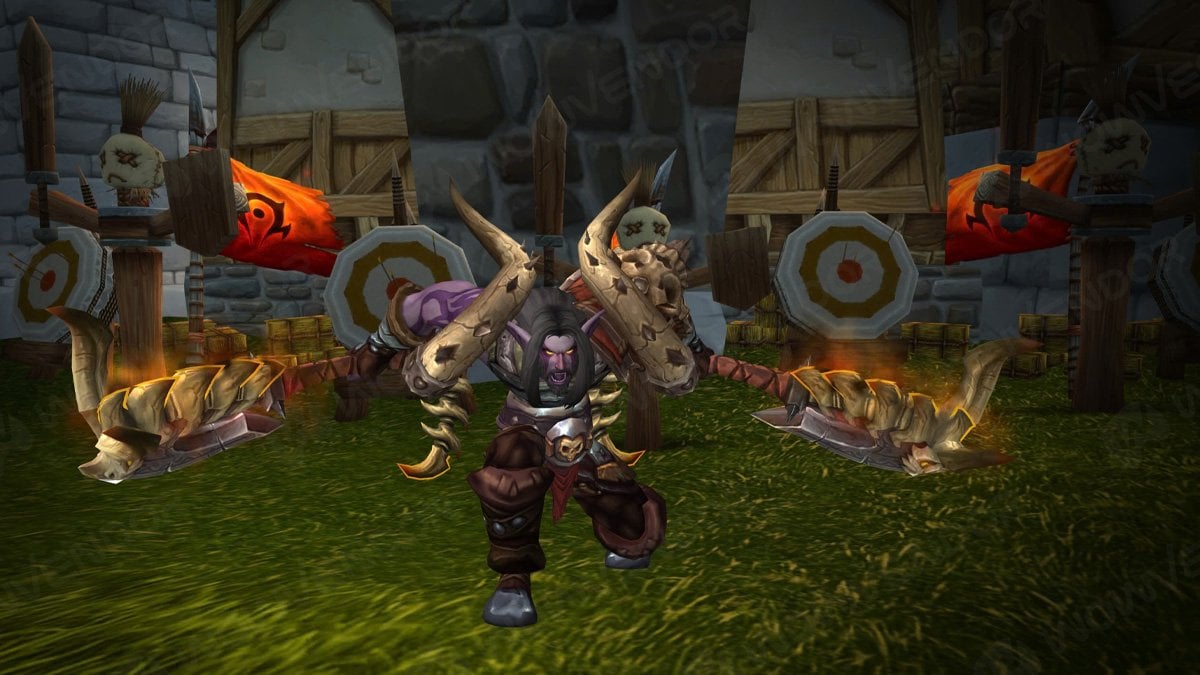
In this section, we’ll break down the Fury Warrior opener, rotation for both Slayer and Mountain Thane, and a step-by-step example to help you master the spec’s skill priority.
Fury Warrior opener
Opener is a sequence of actions executed at the start of every encounter. It takes top priority in rotation. These actions work in priority order with the goal to get Enrage as soon as possible and keeping this effect going as long as possible. But more about that later. Let’s take a look at what a possible single-target opener for Slayer may look like:
- Recklessness > Avatar > Trinkets and Racial abilities (Berserking, Blood Fury, etc.) > Charge > Rampage > Thunderous Roar > Bladestorm > Rampage > Raging Blow
The moment you hit Rampage for the first time you can start using your powerful 1.5 min cooldown buttons and enter the loop of Enrage uptime. This is how simple that is.
The same goes for the AoE opener. Let’s see a possible AoE opener for Mountain Thane:
- Recklessness > Avatar > Trinkets and Racial abilities (Berserking, Blood Fury, etc.) > Charge > Rampage > Thunder Blast > Ravager > Thunderous Roar > Thunder Blast > Rampage
As you can see, there’s no set opener—it’ll vary based on your current talent build. While the core rotation stays the same, the order of abilities might shift a bit due to how some talents affect your Rage generation. The goal of every opener, however, remains the same: get into Enrage as quickly as possible, start using your most powerful buttons, and maintain high Enrage uptime.
Fury Warrior rotation
The rotation of a Fury Warrior is a priority list with one goal: Reaching 100 Rage and use Rampage to enter Enrage status. Staying in Enrage is key to maximizing your damage as it boosts your output.
While other abilities can trigger Enrage, they don’t do so with 100% reliability, making Rampage your most reliable option. This creates an addictive gameplay loop where you keep using abilities to get enough Rage for Rampage so you can have the high Enrage uptime.
There’s no strict rotation beyond the short openers mentioned earlier. The priority of skills changes depending on your Hero Spec and some other talents. But you press your skills reactively, according to their priority, and not in a predetermined order. Below is a skill priority for both Hero trees.
Slayer

Single-target
- Recklessness
- Avatar
- Thunderous Roar (Enraged) / Champion Spear (Enraged) / Ravager (Enraged)
- Bladestorm (Enraged)
- Execute (2 stacks Sudden Death, less than 2 stacks Imminent Demise)
- Rampage (not Enraged)
- Execute (3 stacks of Marked for Execution)
- Raging Blow (if you have Brutal Finish, but less than 5 stacks of Slaughtering Strikes)
- Rampage (if Rage >100)
- Bloodthirst (Vicious Contempt or at least 4 stacks of Bloodcraze)
- Raging Blow
- Bloodthirst
- Execute
- Whirlwind
- Slam
AoE
- Recklessness
- Avatar
- Rampage (not Enraged)
- Thunderous Roar (Enraged) / Champion Spear (Enraged) / Ravager (Enraged)
- Whirlwind (if Meat Cleaver is not active)
- Bladestorm (Enraged)
- Rampage (if Rage > 100)
- Execute
- Raging Blow
- Bloodthirst
- Whirlwind
With a full Season 3 Slayer set, rotation changes a little bit. After the opener, your rotation comes down to using Rampage (to enter the status and prevent Rage overcap) and Raging Blow, completely removing other filler buttons. The only situation when you want to use Bloodthirst is if you have no Raging Blow procs. Execute is still used on 2 Sudden Death stacks.
Mountain Thane

Single-target
- Thunder Blast (reset stacks before Avatar)
- Recklessness
- Avatar
- Thunder Blast (Enraged)
- Rampage (not Enraged)
- Thunderous Roar (Enraged) / Champion Spear (Enraged) / Ravager (Enraged)
- Rampage (if Rage >100)
- Bloodthirst (Vicious Contempt or at least 4 stacks of Bloodcraze)
- Raging Blow
- Bloodthirst
- Execute
- Thunder Clap
AoE
- Thunder Blast (reset stacks before Avatar)
- Recklessness
- Avatar
- Rampage (not Enraged)
- Thunder Blast (Enraged)
- Thunderous Roar (Enraged) / Champion Spear (Enraged) / Ravager (Enraged)
- Thunder Clap (if Meat Cleaver is not active)
- Rampage (if Rage > 100)
- Execute
- Raging Blow
- Bloodthirst
- Thunder Clap
Nothing really changes rotation-wise with the Mountain Thane set. You only need to pay even more attention to Thunder Blast. Set adds additional resets to that skill, but you’re still capped on the maximum charges. So you need to spend Thunder Blast charges as soon as possible to prevent overcap.
The differences between single-target and AoE Fury Warrior rotation The War Within are very subtle. That’s because most of Fury Warrior’s abilities damage multiple targets. At first glance, this priority may feel overwhelming, so let’s break it down with an example.
Let’s imagine that you’re in the fight as Mountain Thane. Your offensive cooldowns, Recklessness and Avatar, are just seconds away from being ready. So, you use Thunder Blast to spend your stacks before pressing Avatar since Avatar grants several stacks of Thunder Blast.
Now you can use your offensive cooldowns. While doing so, check if you’re still Enraged. Yes, you are. You can successfully use Thunder Blast, Thunderous Roar, and Bladestorm.
After all that, you notice Enrage ends, and you’re overcapped on Rage. Use Rampage to get rid of Rage, then go with Raging Blow, Bloodthirst, and Thunder Clap, while spending Thunder Blast charges if you’re Enraged, and using Rampage as soon as Rage hits 100.
Do this for 1.5 minutes until your offensive buffs and other big buttons are off cooldown so you can repeat the process from the start. This is how Fury Warrior rotation, or rather, skill priority works.
Follow the next guidelines to get used to Fury Warrior skill priority:
- Use Recklessness and Avatar on cooldown. Delay them only in case a burst is needed for specific moments in a fight, for example, Bloodlust / Heroism windows. If you’re Mountain Thane, spend stacks of Thunder Blast before pressing Avatar. Same goes for racial abilities, such as Blood Fury, etc., and trinkets. In the section below we have a macro that combines all these burst buffs into a single key bind.
- Make sure to use Avatar+Recklessness into Charge when combat starts. Using them out of combat won’t generate enough Rage to use Rampage right after.
- Press 1.5-minute abilities, such as Thunderous Roar, Champion Spear, Bladestorm, and Ravager only when you’re Enraged. The same goes for your Hero Mechanics, Thunder Blast for Mountain Thane (exception before using Avatar), and Execute with Sudden Death stacks for Slayer.
- When everything else is on cooldown, use Rampage to enter Enrage or to spend Rage to prevent overcap.
- When everything else is on cooldown and Rage is not 100+, use Raging Blow, Bloodthirst, Slam, Thunder Clap, Whirlwind and related procs to generate Rage.
Fury Warrior macros
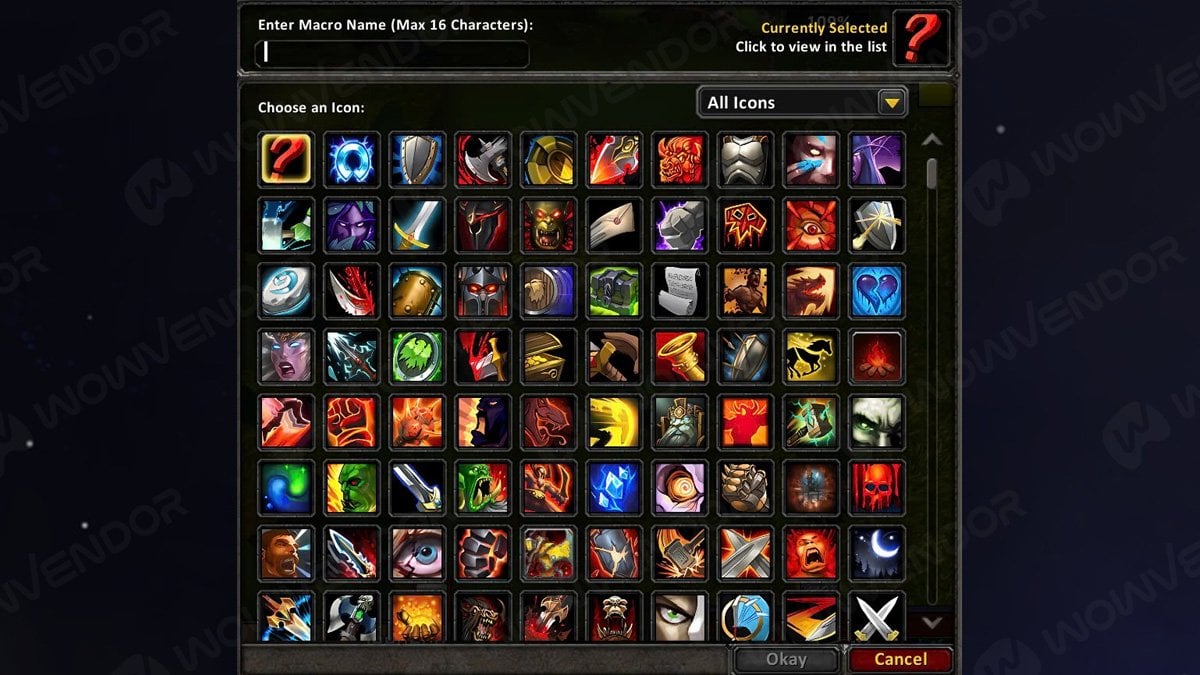
Macro are useful combinations of commands that allow you to ease the usage of certain skills and improve user experience. Below are several Macros for Fury Warrior:
- Combine Recklessness with offensive cooldowns. This macro unites Recklessness with Avatar and various racial buffs, trinkets, etc., on one button, as you never use them separately.
#showtooltip
/use Recklessness
/use Avatar
/use Blood Fury
/use Berserking
/use Ancestral Call
/use 13
/use 14- Throw skills at your cursor position. Allows to cast skills like Heroic Leap at the mouse cursor position.
#showtooltip Heroic Leap
/cast [@cursor] Heroic Leap- Cast abilities at your character position. Allows you to cast abilities like Champion Spear at your character’s feet, no matter where the cursor is or who is your target.
#showtooltip Ravager
/cast [@player] Ravager- Pummel. Use your kick against the focus target, or if no target is focused against your primary one.
#showtooltip Pummel
/cast [@focus, harm, exists][@target] Pummel- Charge, Intervene, Victory Rush. Combines these buttons on a single button, allowing you to use a gap closer based on your target with one key bind.
#showtooltip
/cast @harm Charge
/cast @harm Victory Rush
/cast @help InterveneFury Warrior Weak Aura settings

Weak Auras is an addon that allows you to add custom UI elements for various purposes. Be it a reminder that some abilities are being off cooldown for too long, resource overcap, incoming boss attacks, etc. Below are some helpful Weak Auras for Fury Warrior:
- Spell Reflect Alert. Creates an alert when a spell is targeted at you, so you can reflect it back.
- Afenar UI. A special set of UI adjustments for comfortable play on both Warrior DPS specs.
- Unhinged Bloodthirst. This aura shows the effect of Unhinged triggers, guaranteeing the next Bloodthirst being a guaranteed crit.
Fury Warrior utility
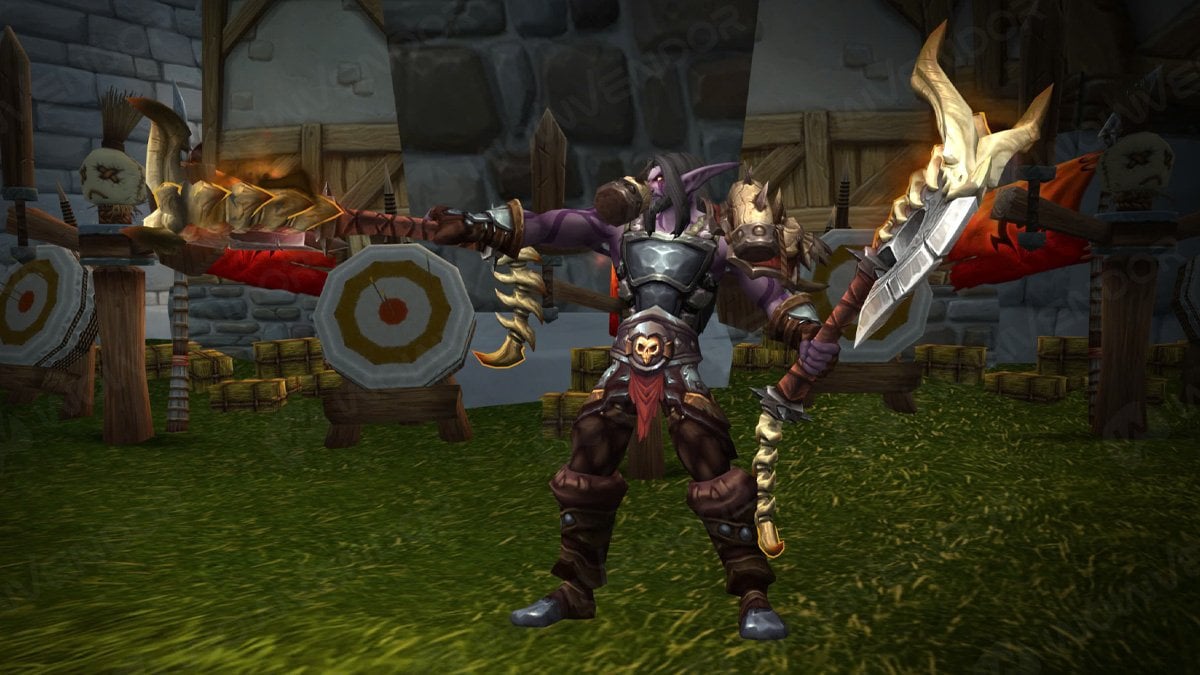
Aside from buttons designated to dealing damage, Fury Warrior has several buffs, defensive cooldowns, and some group utility.
| Utility | Description and tips |
|---|---|
| Charge | A mobility tool. Gap closer between you and the target. Used in opener as this action generates Rage. Be sure that the enemy won’t move anywhere right after, or you will miss melee uptime. Use it outside of the opener to quickly return back in the melee range if you had to leave it to resolve mechanics of encounter. |
| Pummel | A low-cooldown spellcasting interrupt, also known as kick. |
| Intervene | A mobility tool for jumping to allies. Also makes you intercept attacks aimed at that ally as long as you’re within 10 yards of range. It can be used to relocate yourself to an ally position quickly or to save priority group members like healers from incoming damage. |
| Storm Bolt | Ranged hard Stun. |
| Shockwave | AoE hard Stun. |
| Intimidating Shout | AoE fear and disorientation effect. |
| Berserker Rage | Self-cleansing of crowd control. Useful to remove Fear effect, as being Feared leads to many dangerous situations like pulling extra enemies, etc. Can also be used preemptively. |
| Battle Shout | Shout-type group buff increases damage dealt by physical classes. This includes most melees and Hunter. |
| Rallying Cry | A party-wide defensive cooldown. Increases everyone’s maximum Health. Use it to protect your team from powerful group-wide damage attacks. |
| Spell Reflection | A defensive cooldown that reflects a first spell target at you back at the source and also reduces incoming magic damage. Can be used offensively to reflect powerful casts back at enemies for extra damage. |
Conclusion
That wraps up our WoW Fury Warrior guide! We hope it helped you master the spec and have fun playing it in The War Within Patch 11.2. If you ever need help leveling your Fury Warrior, our WoW power leveling services have you covered!
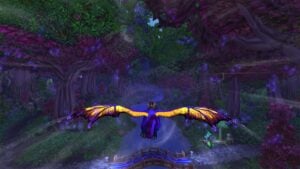
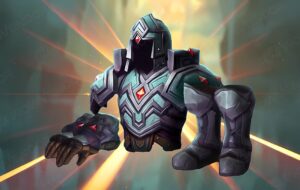
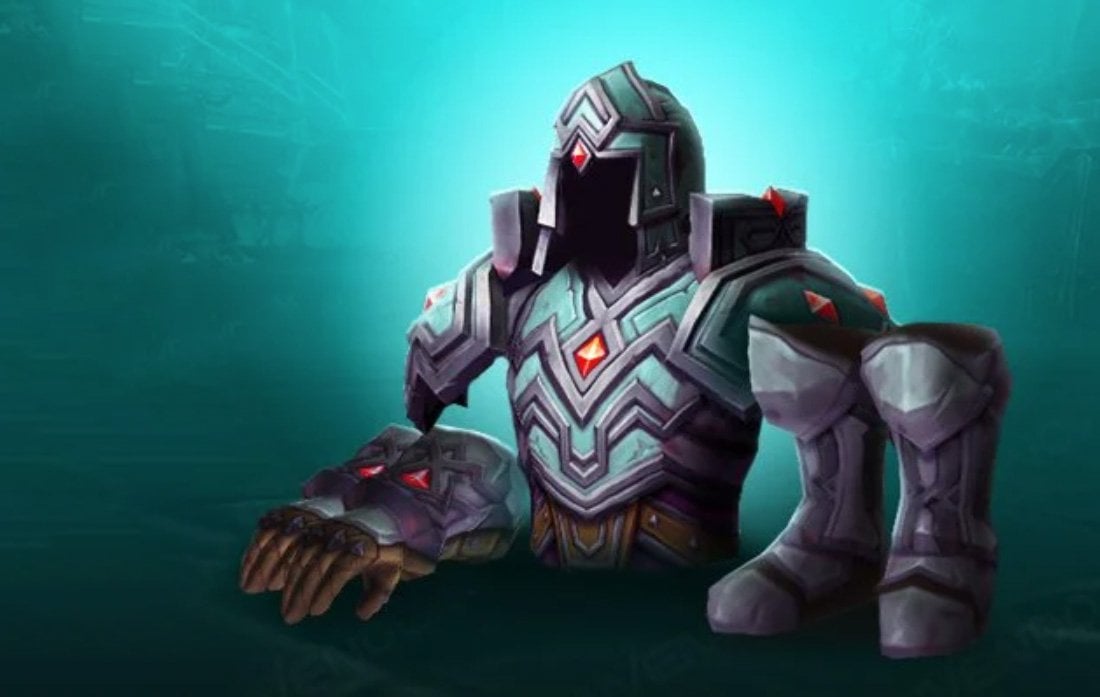
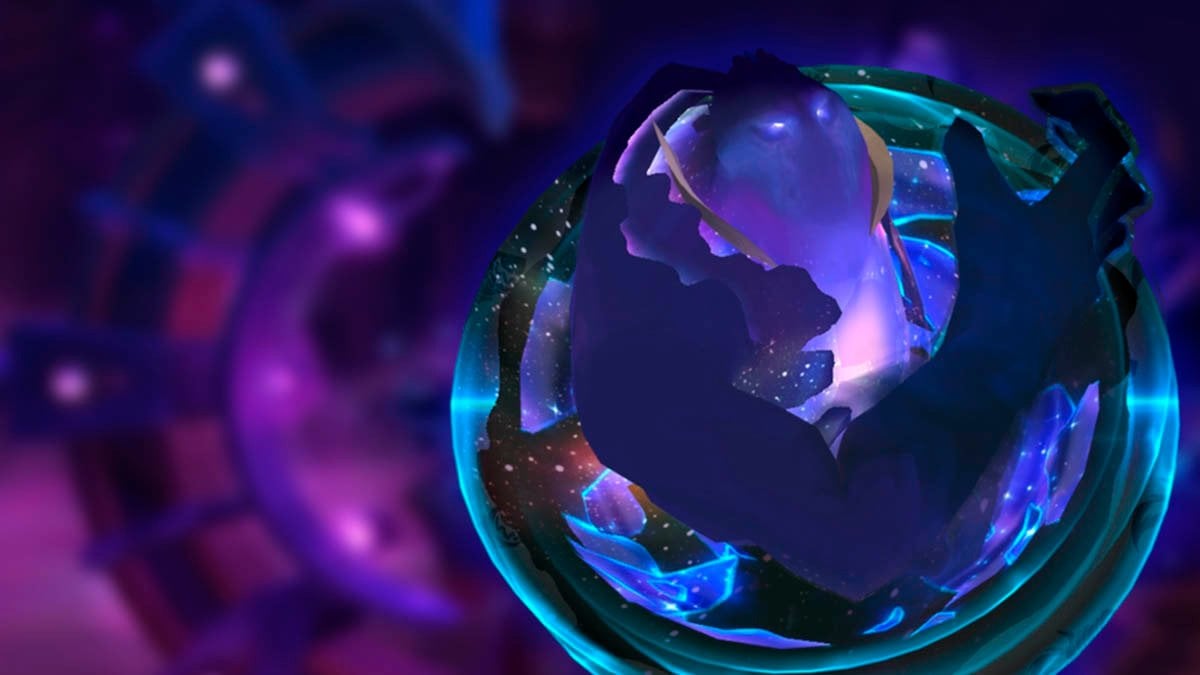
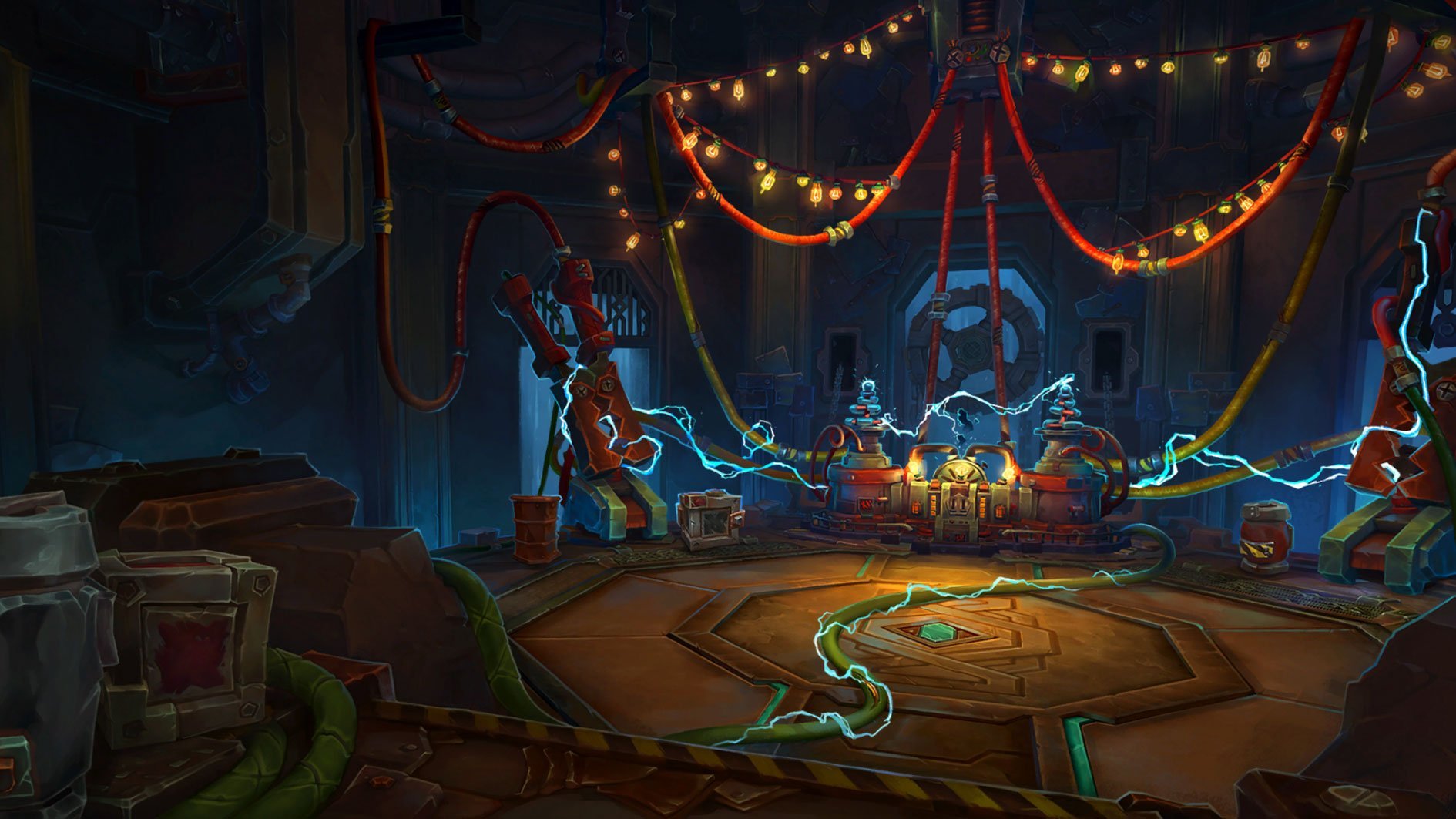
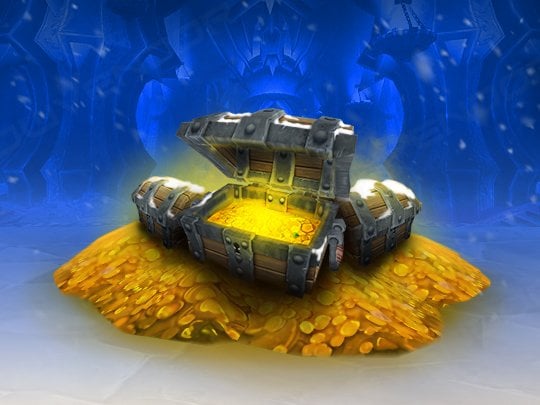
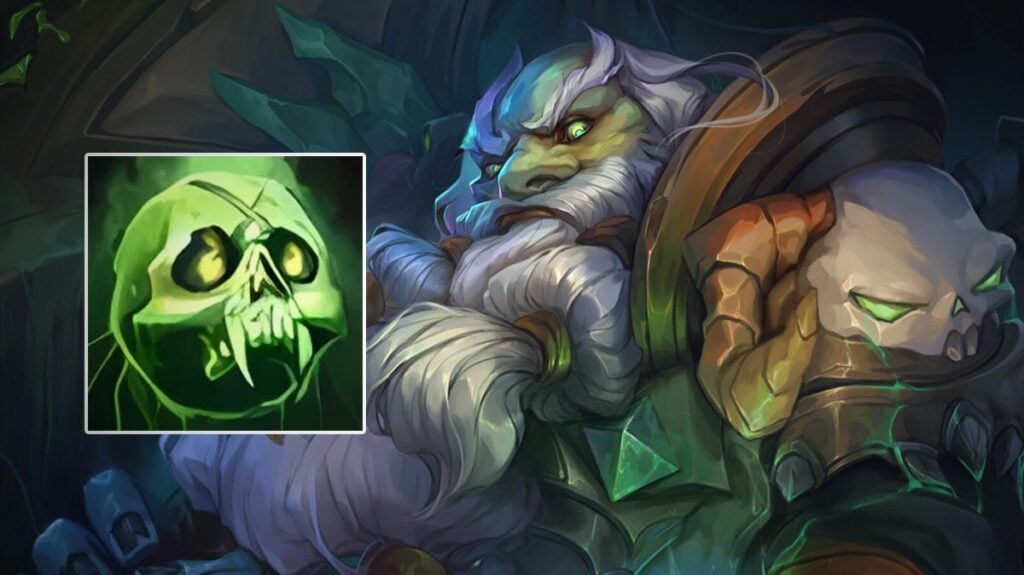
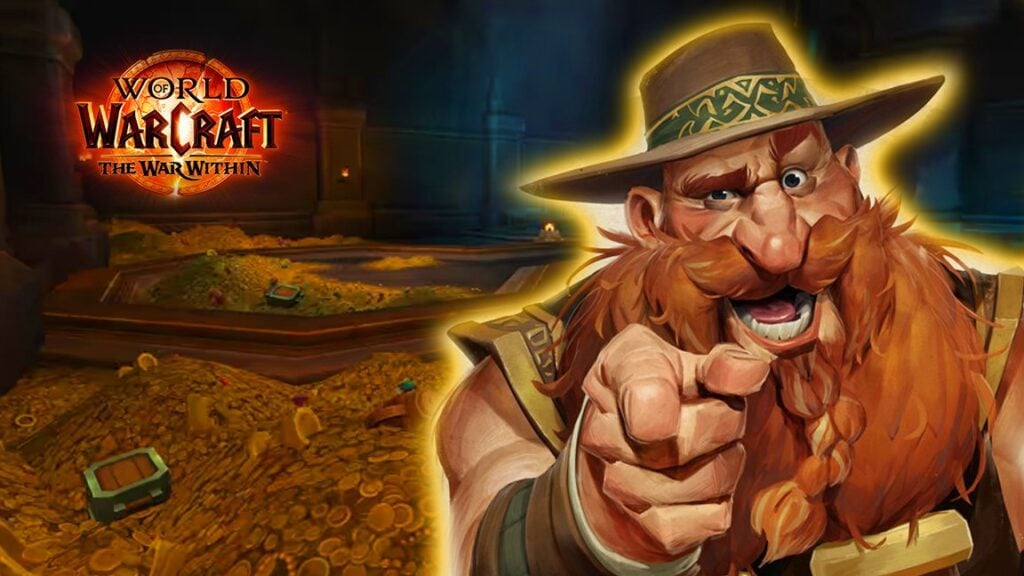
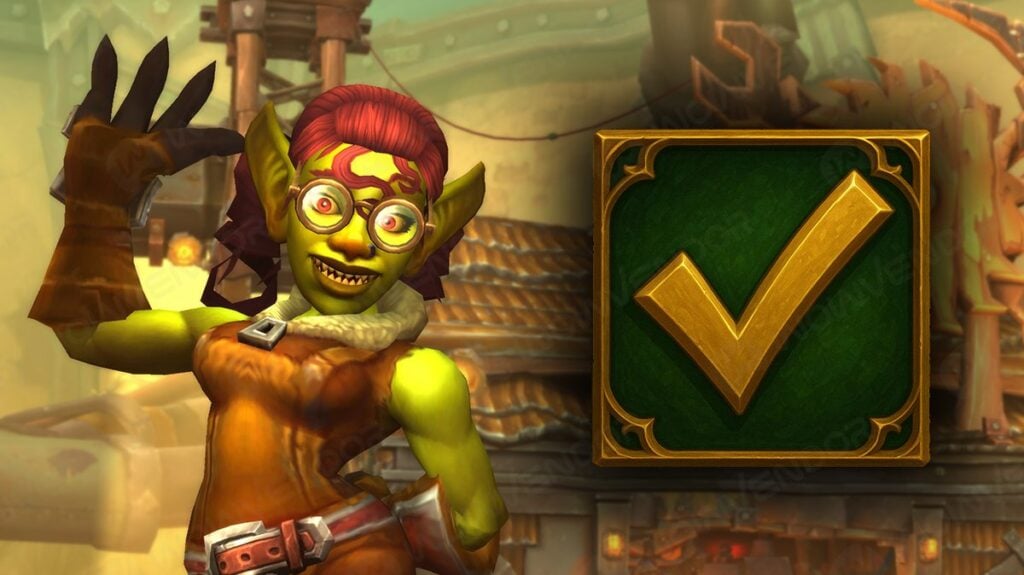
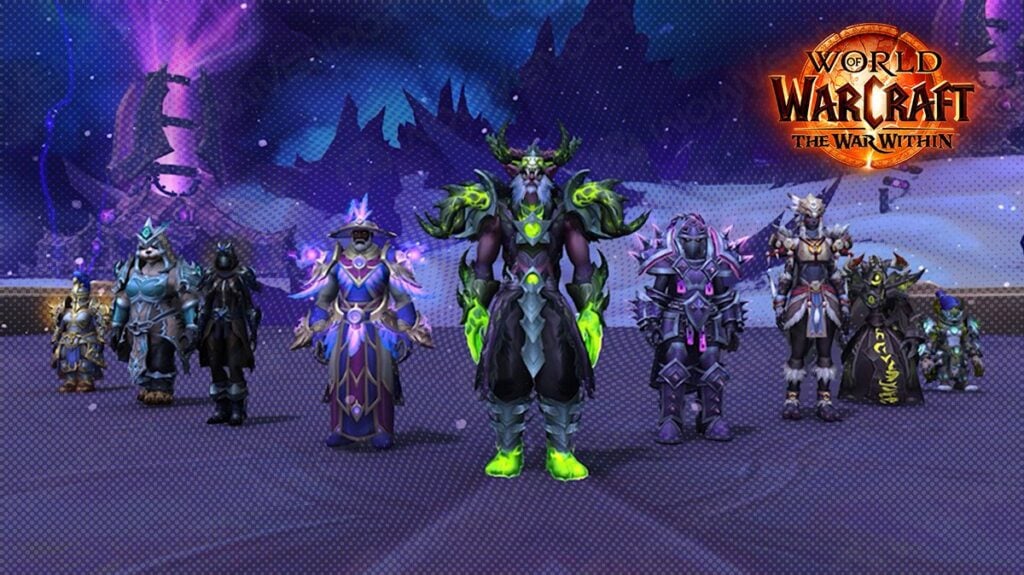

Comments